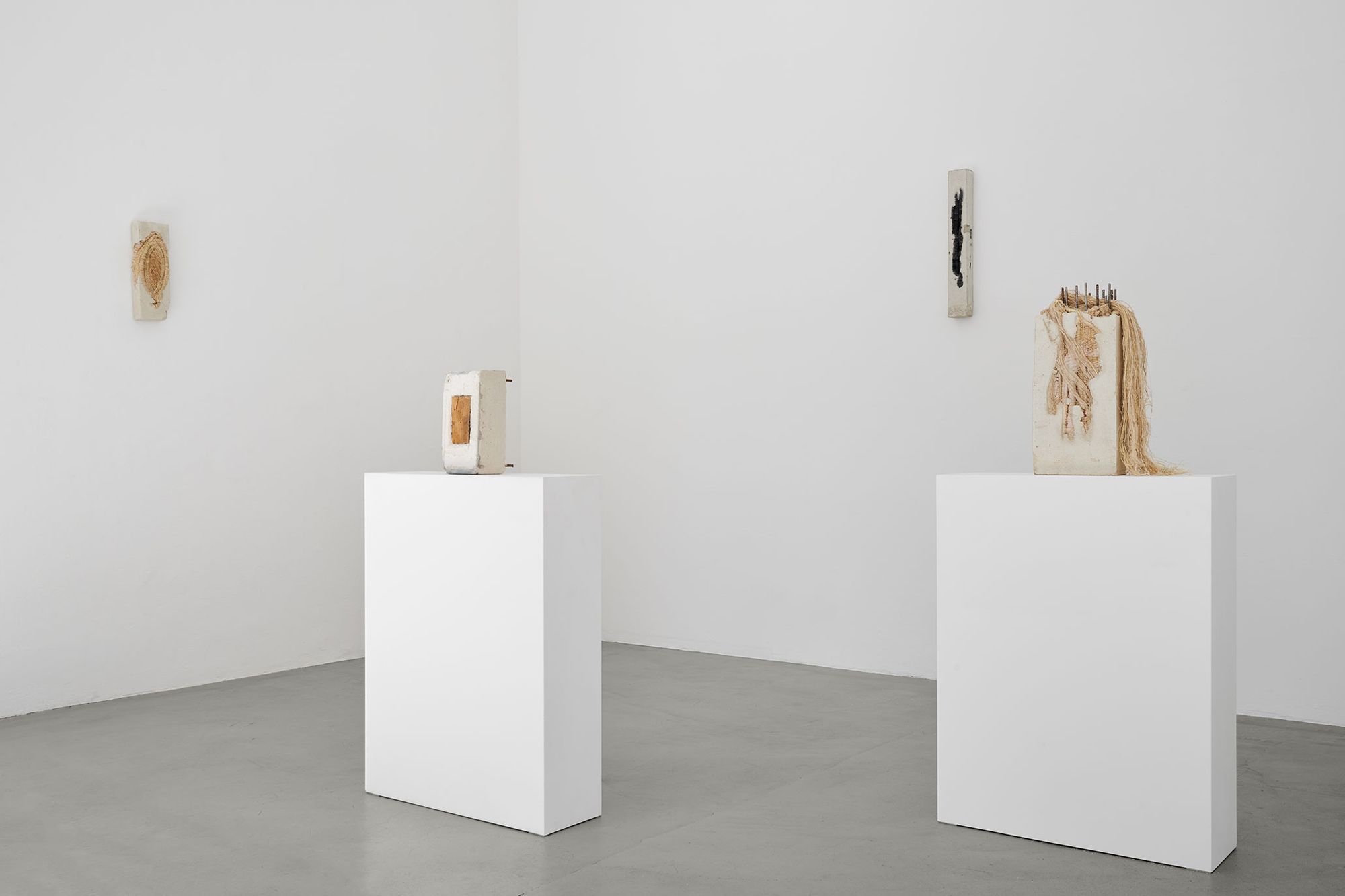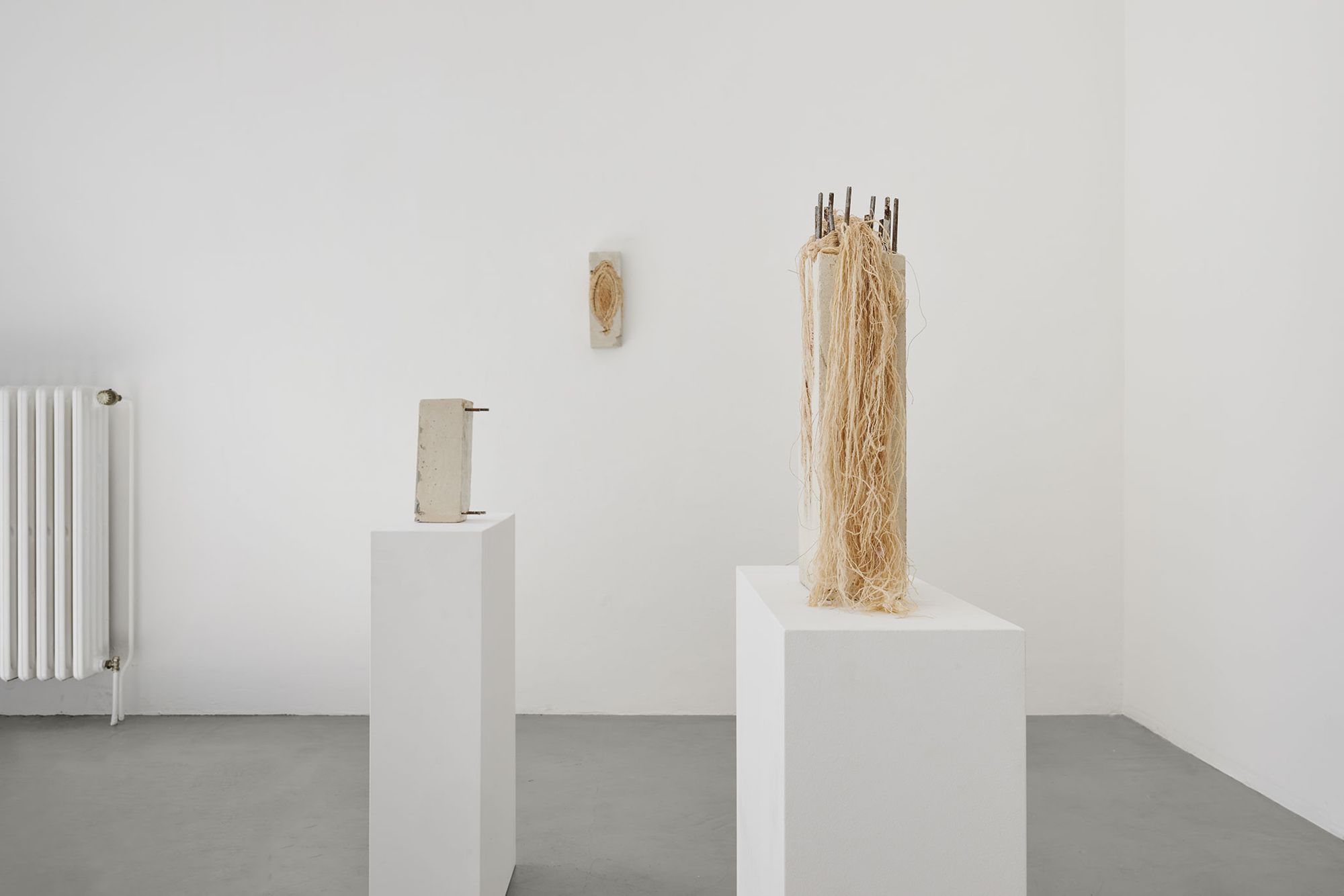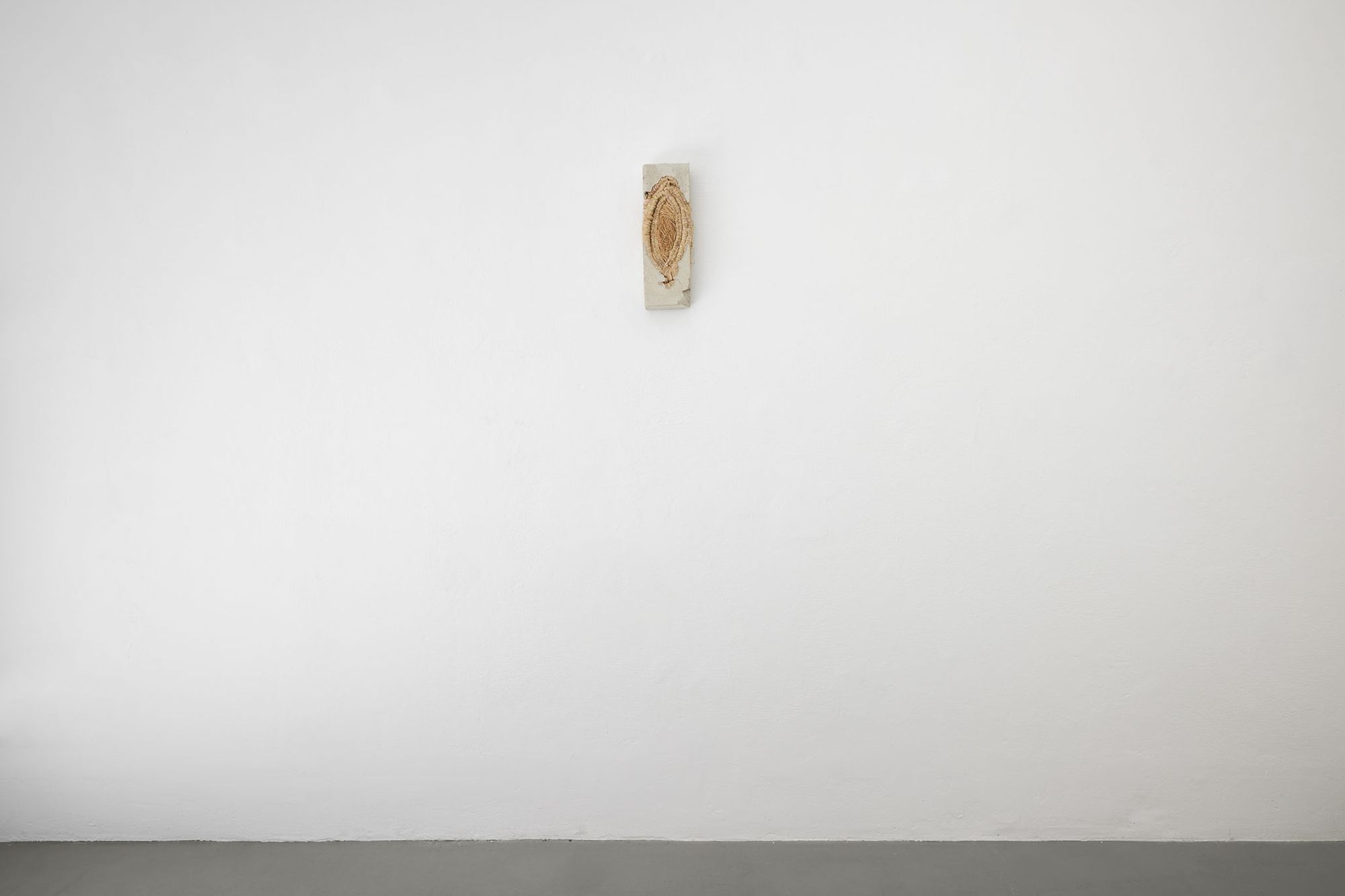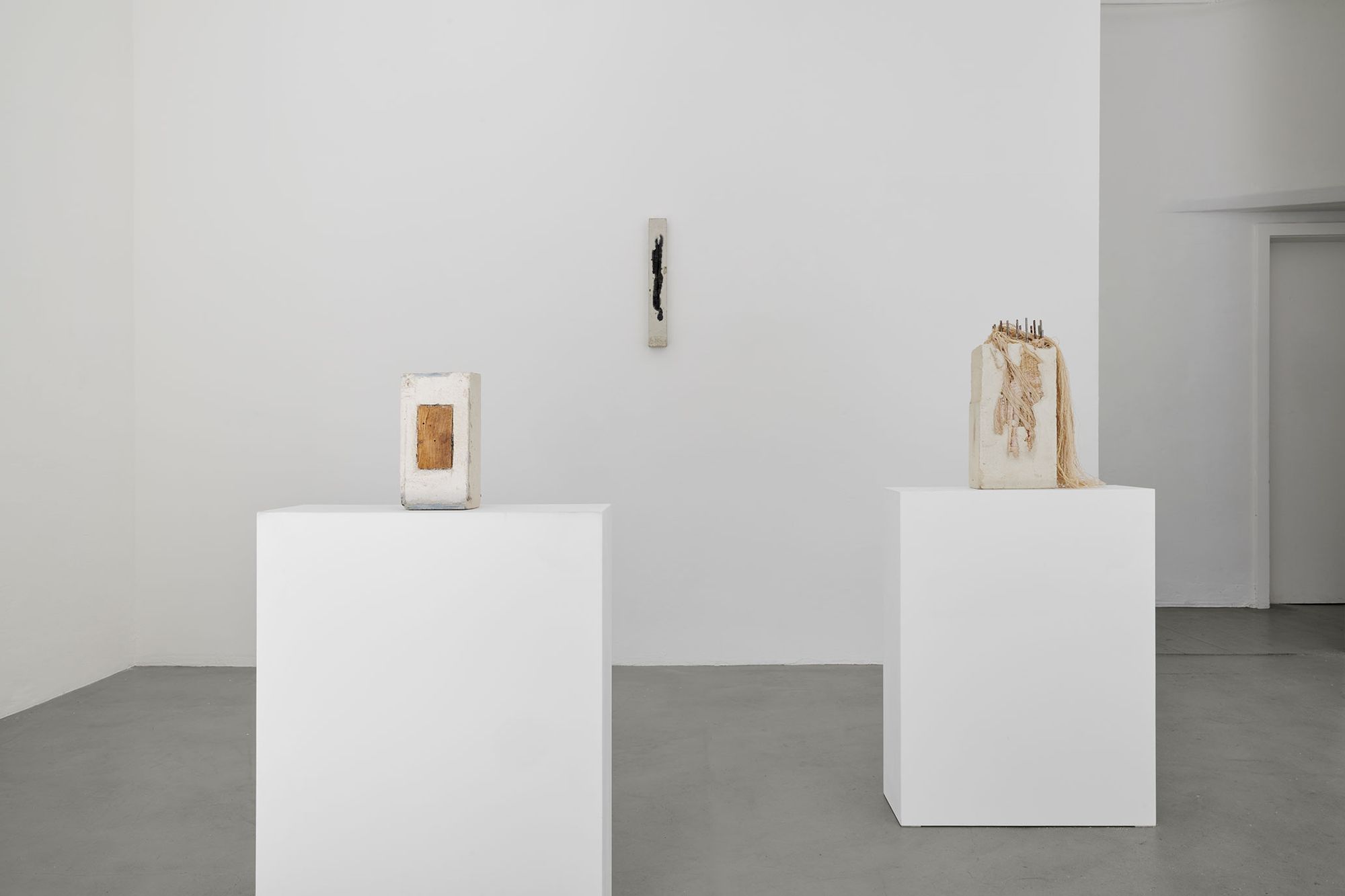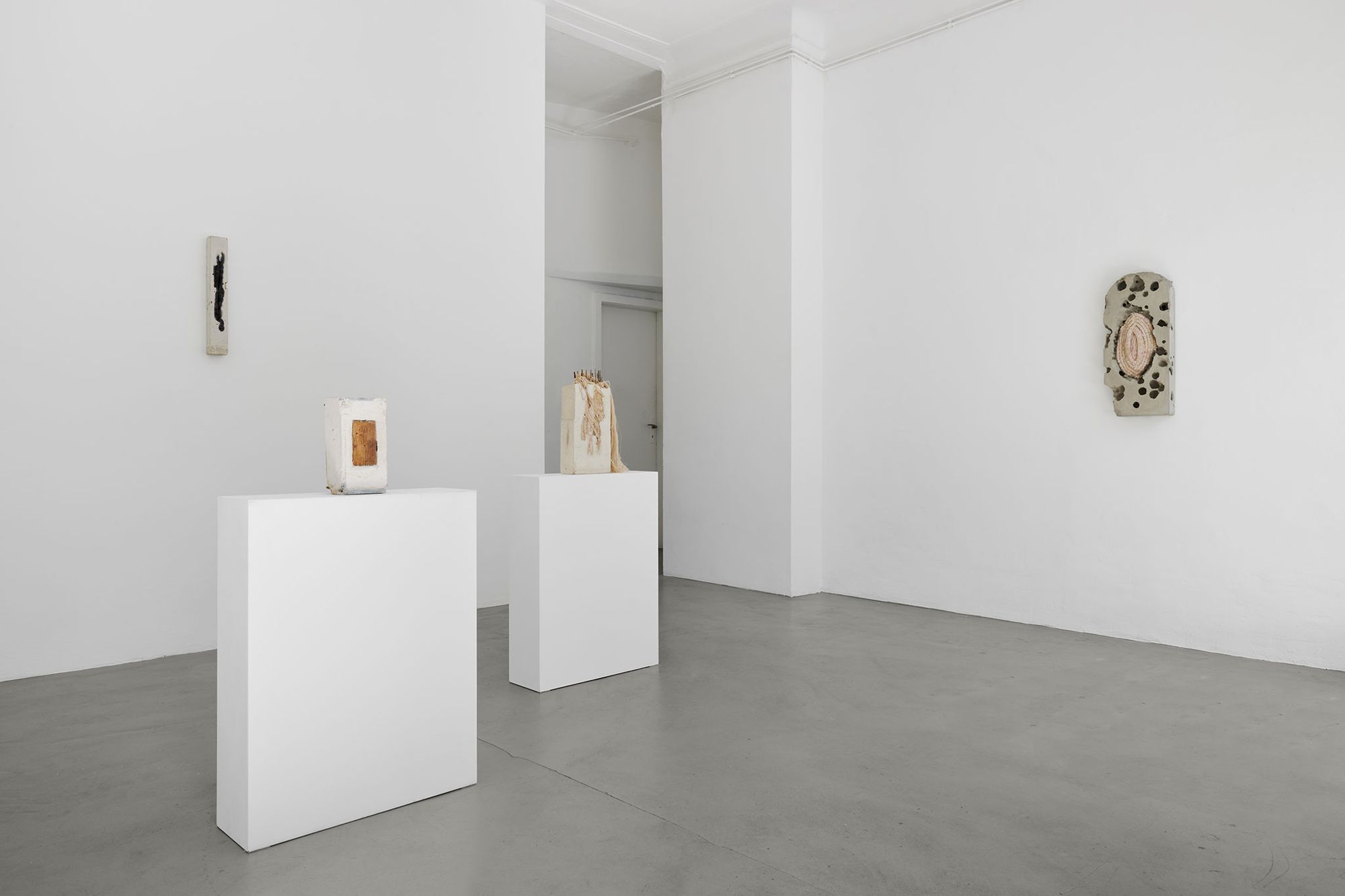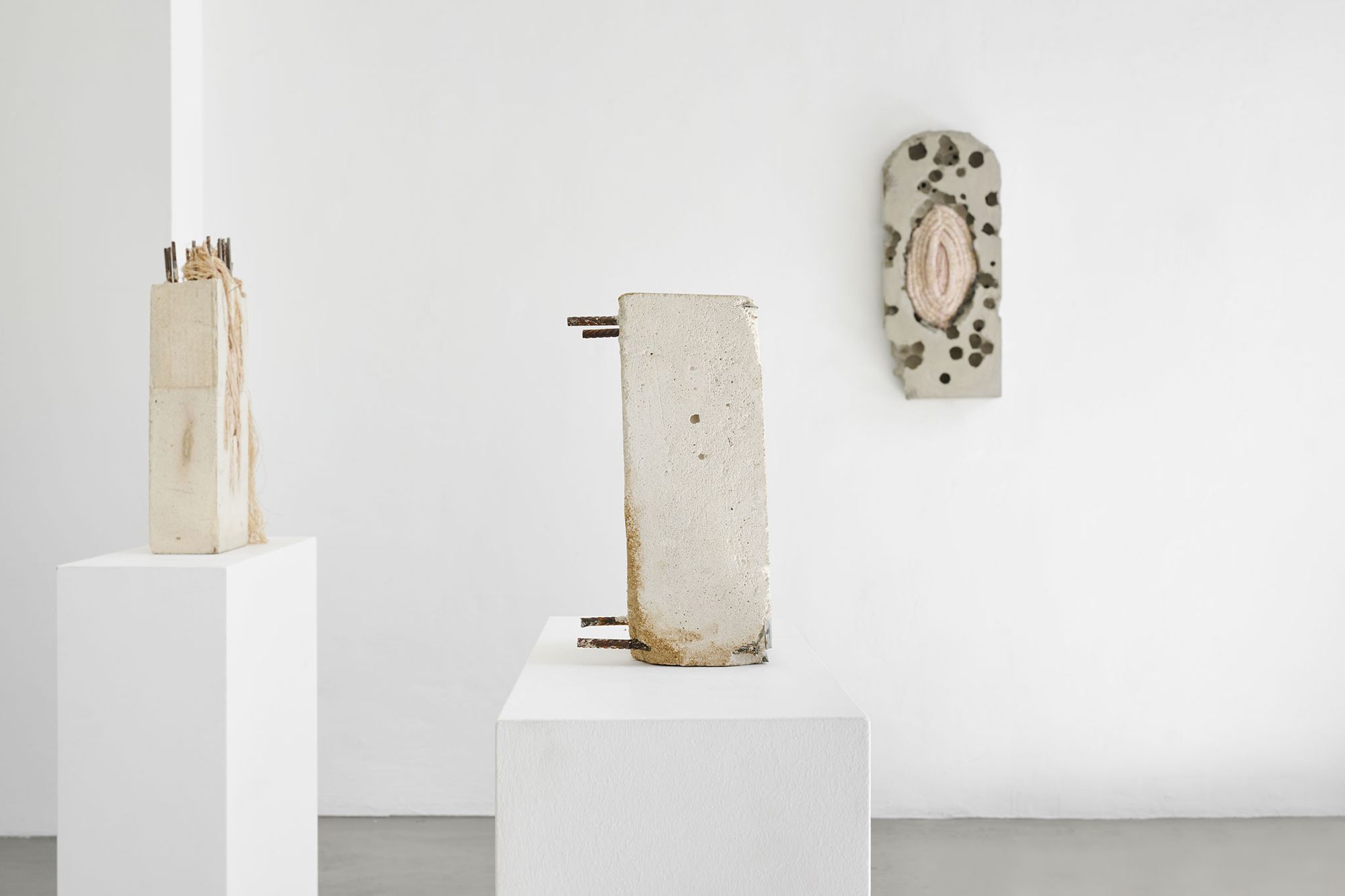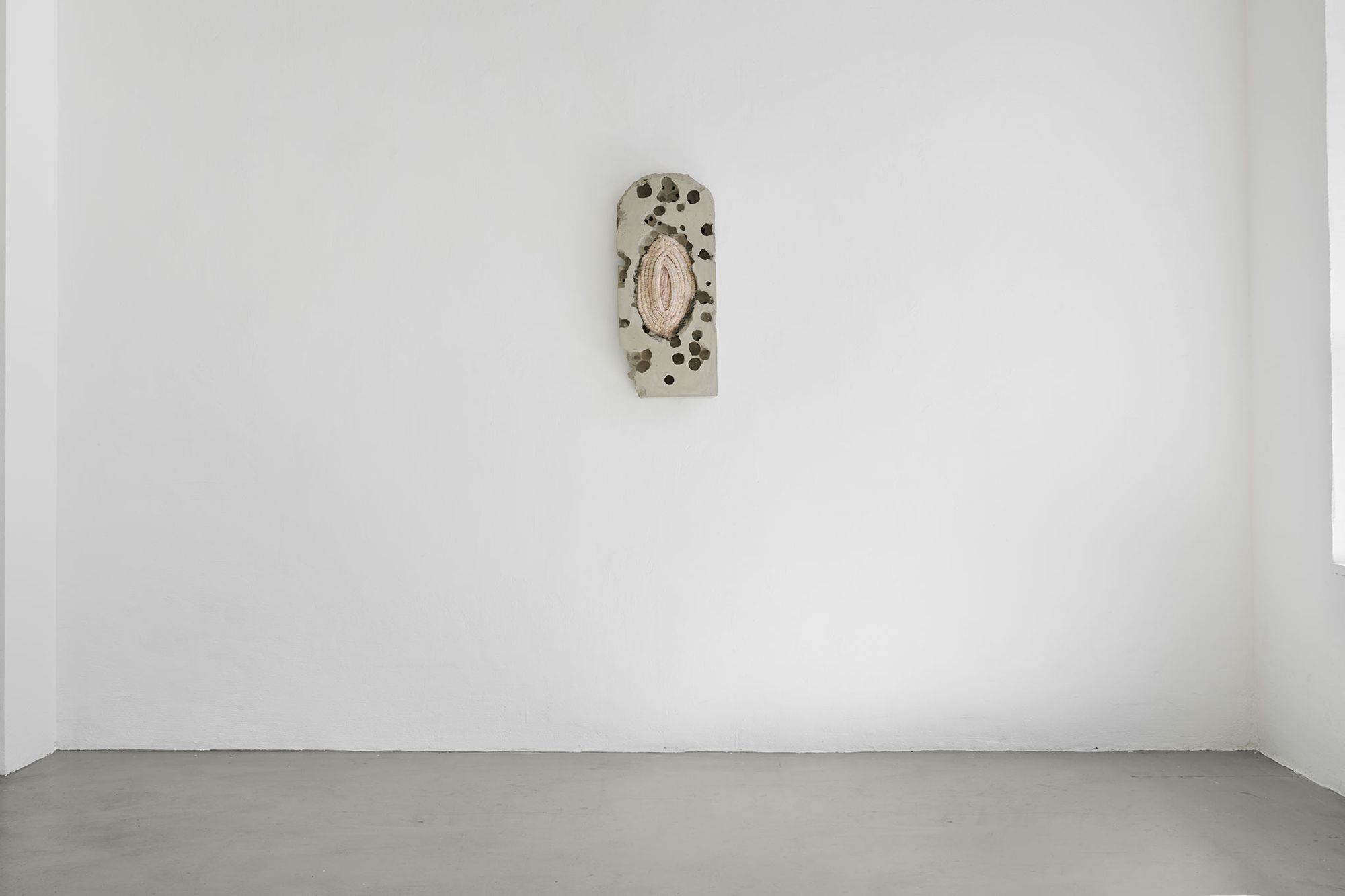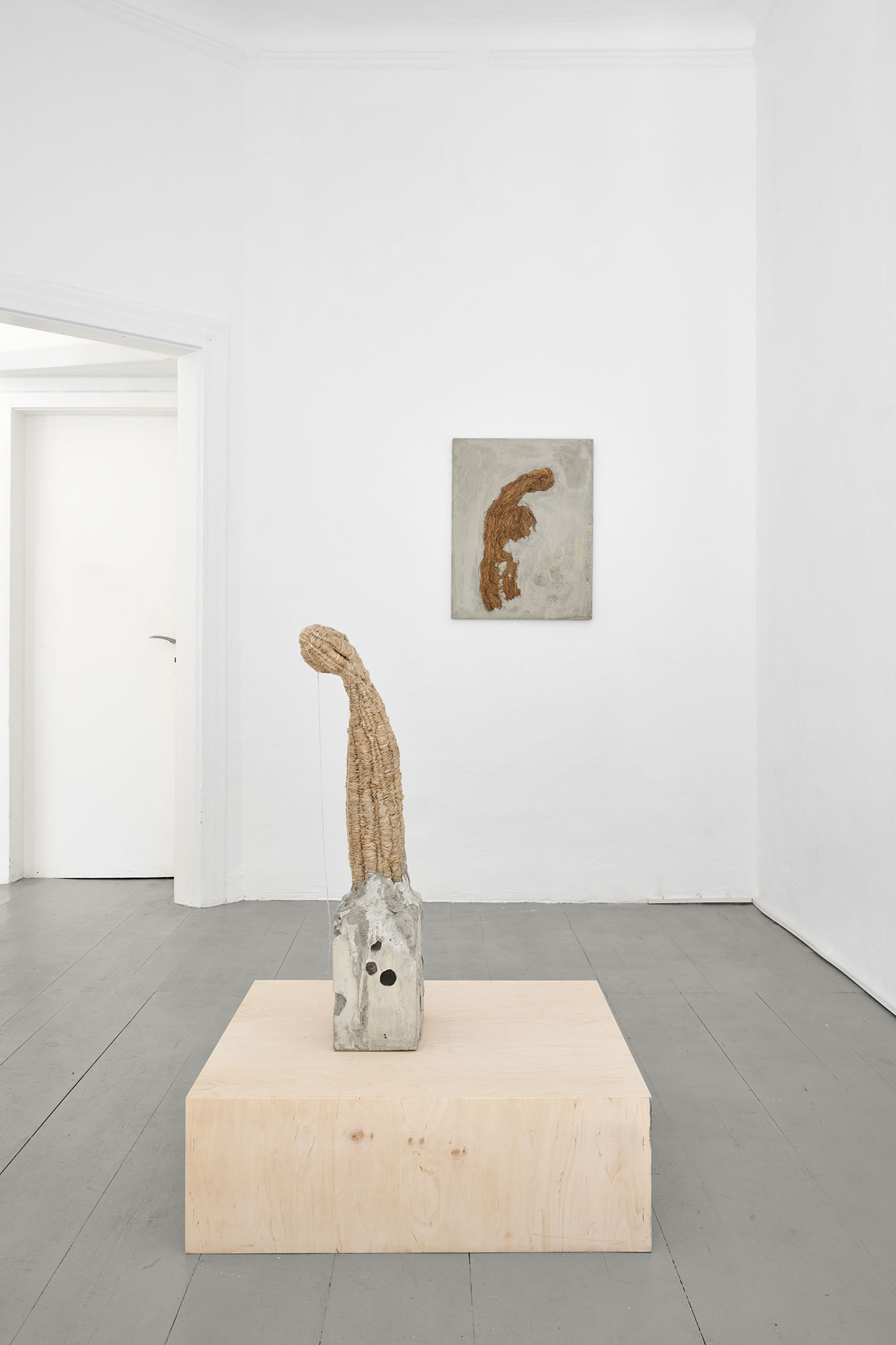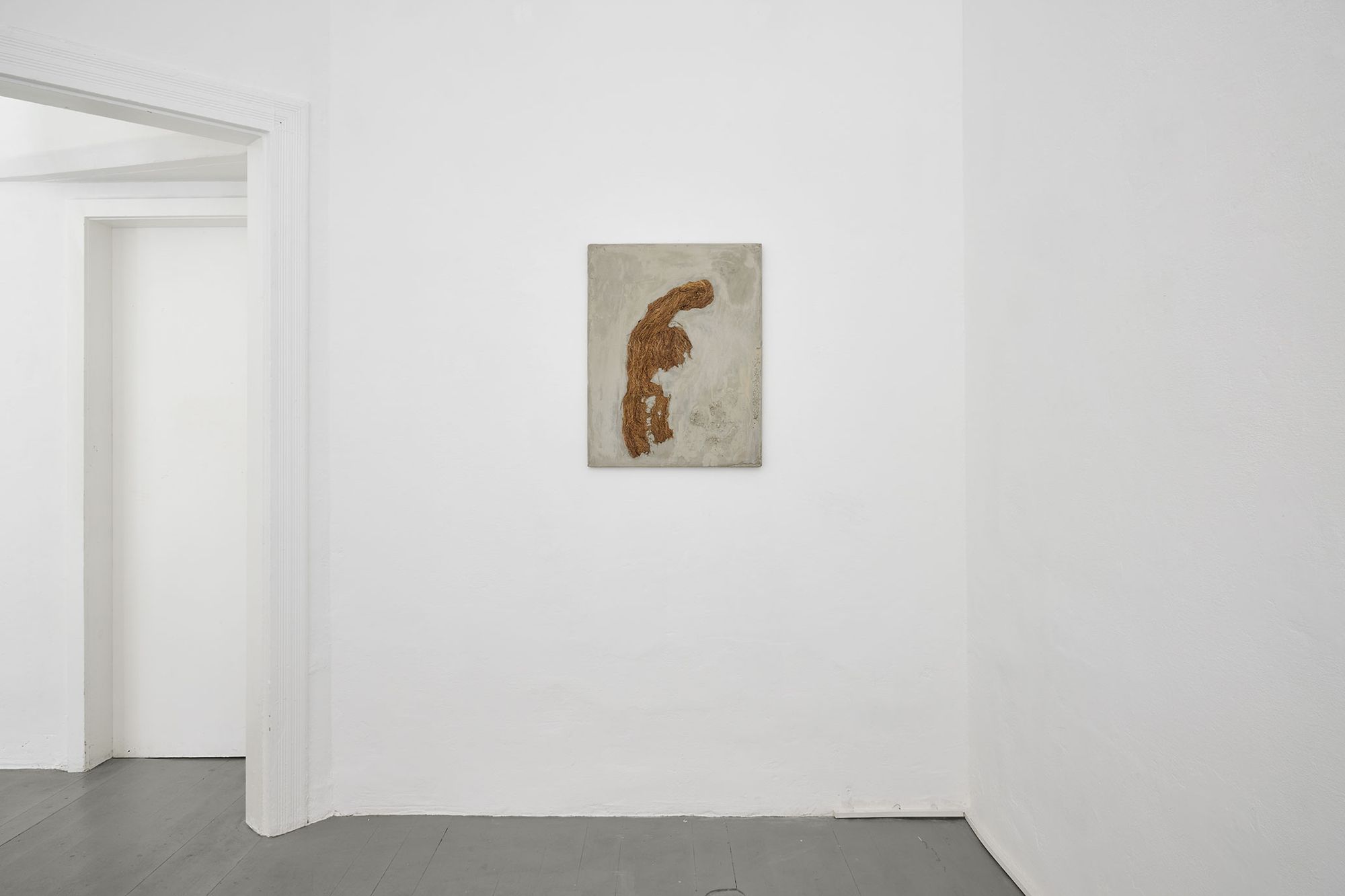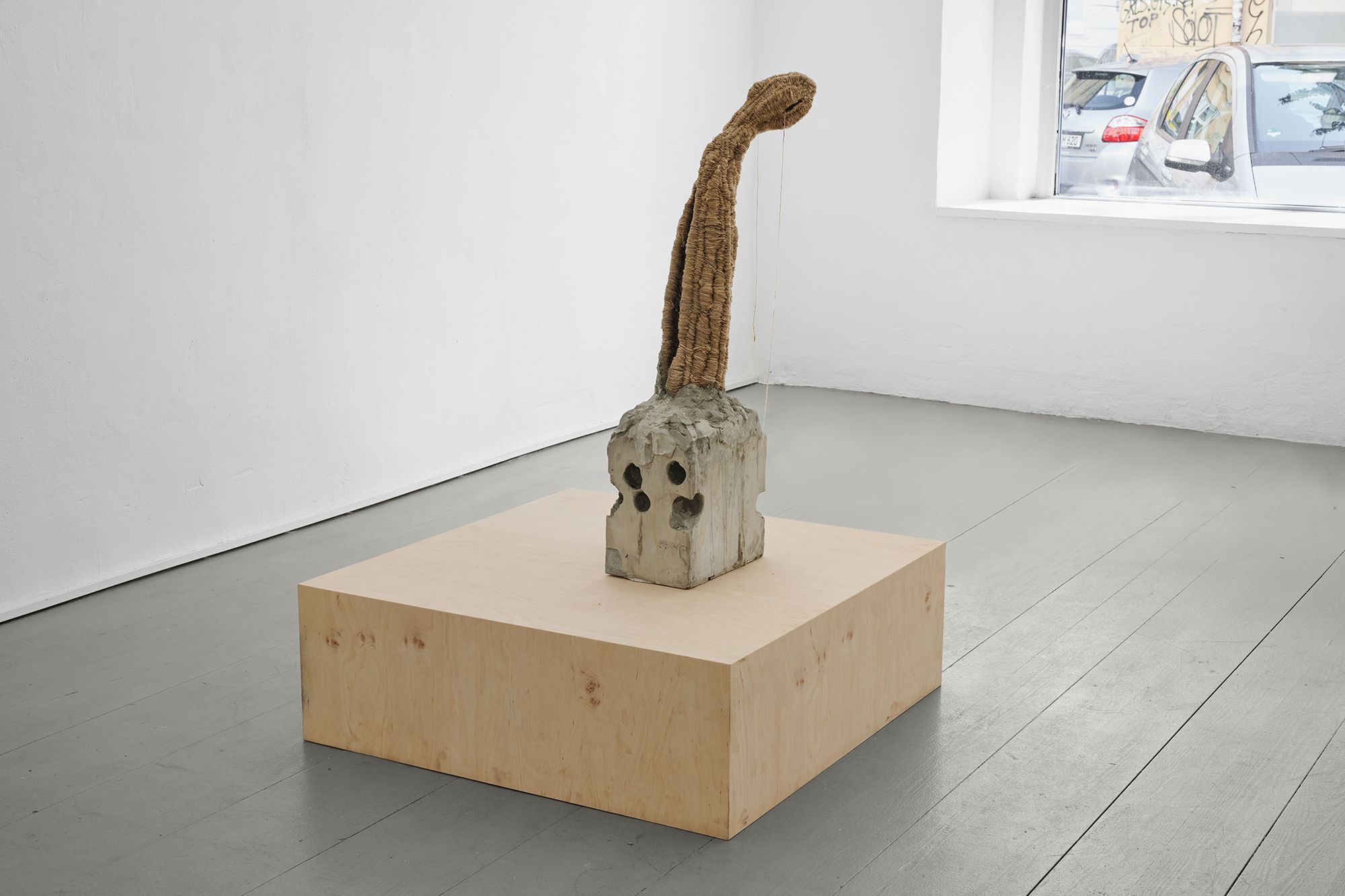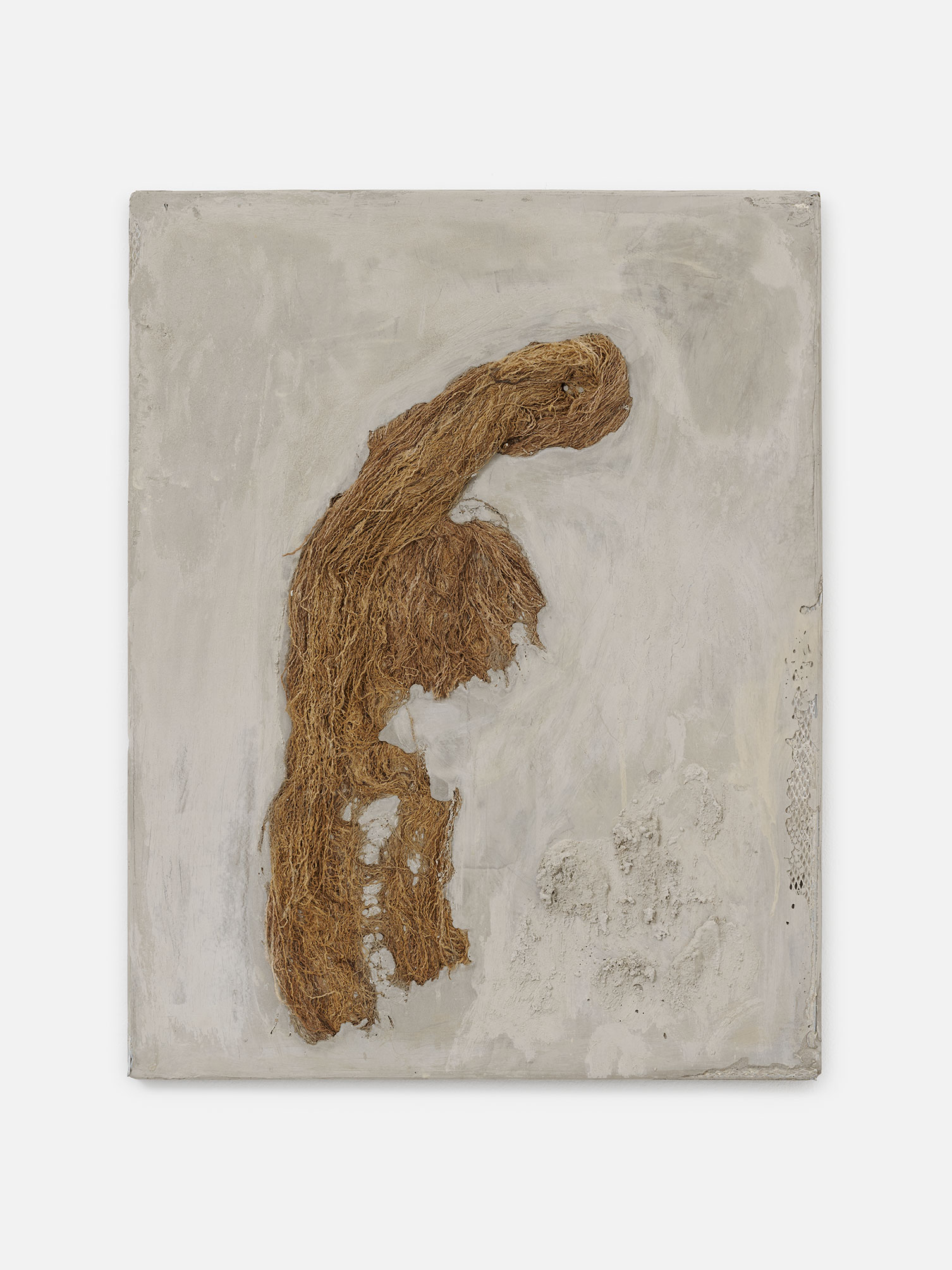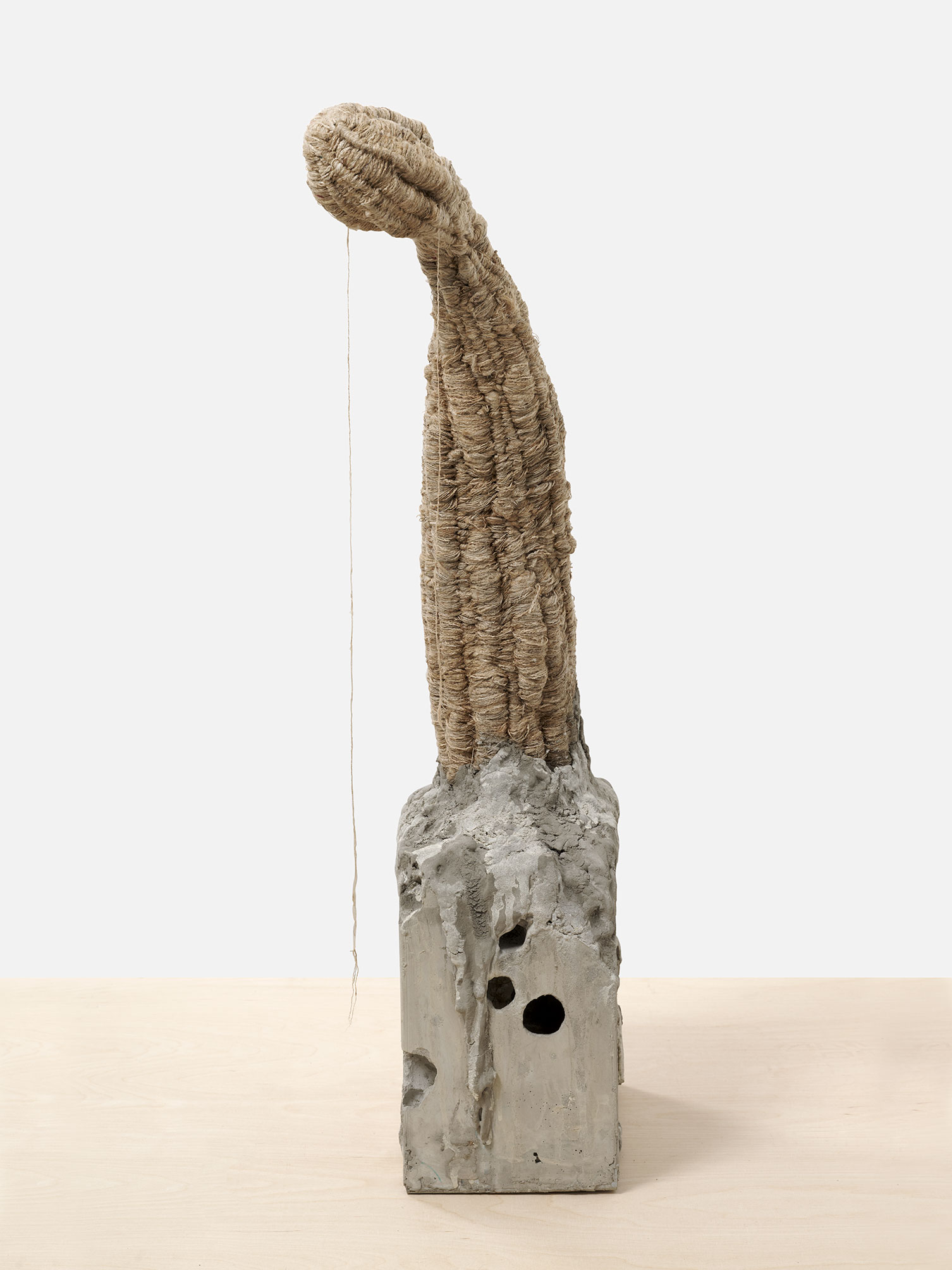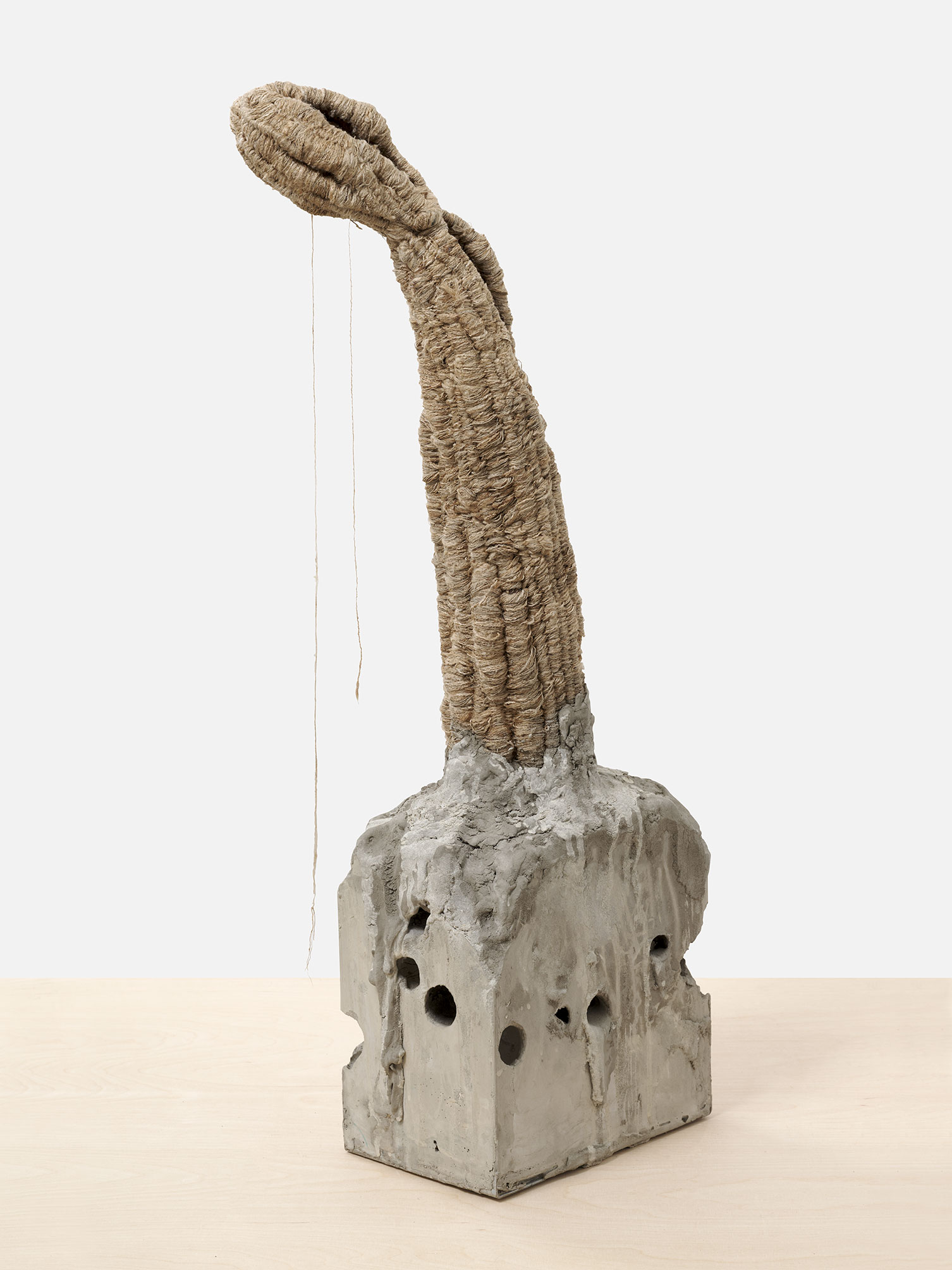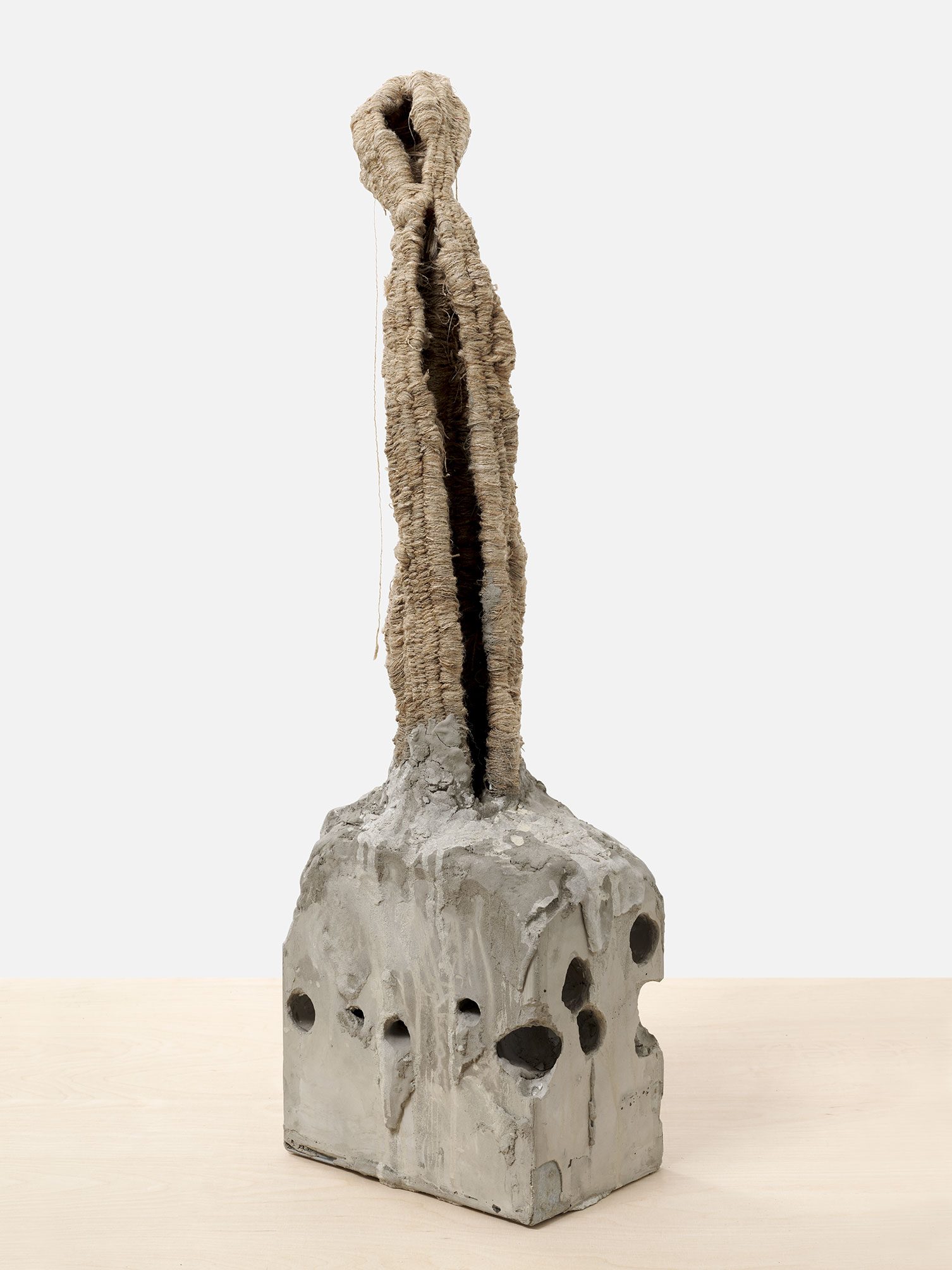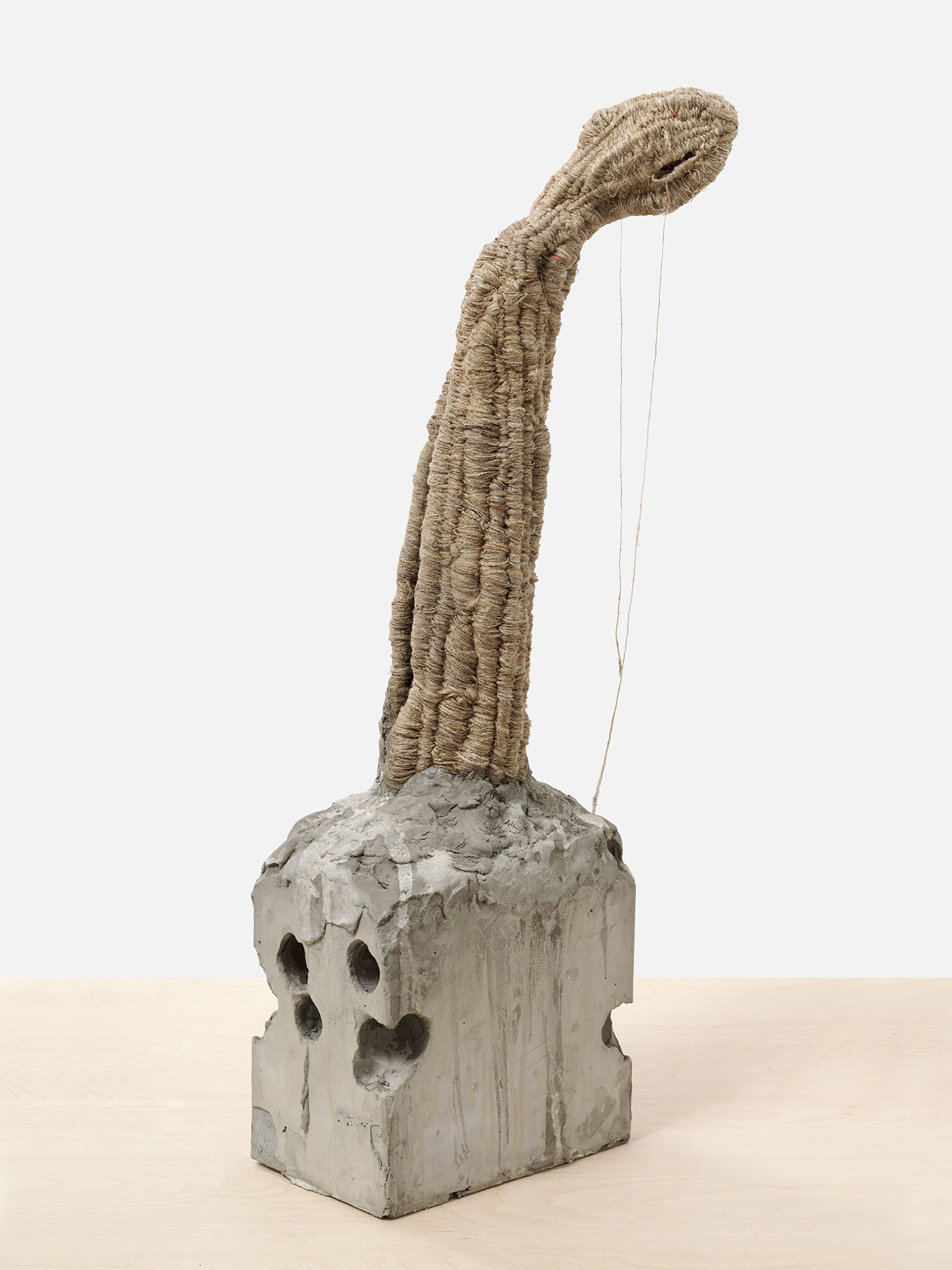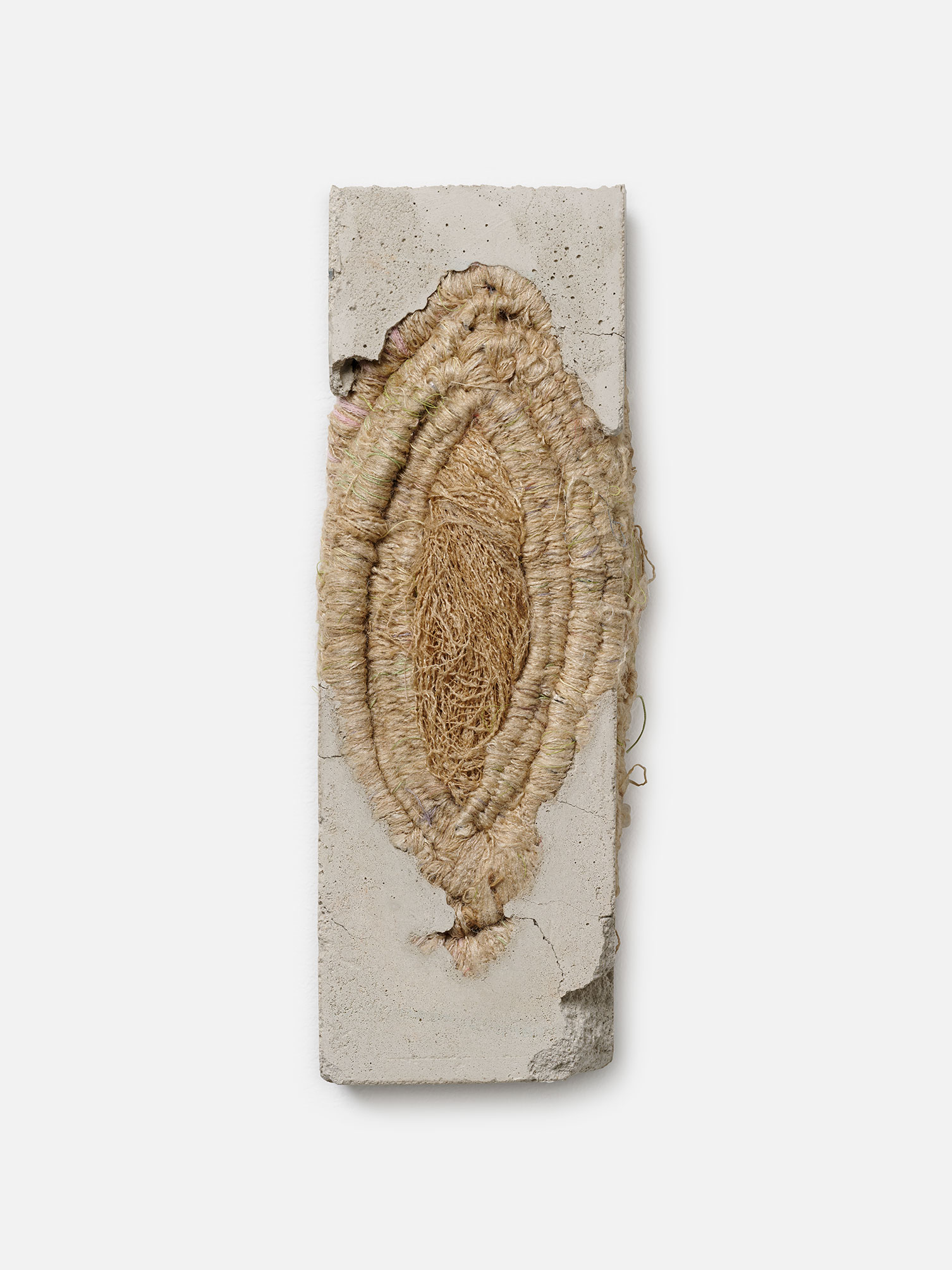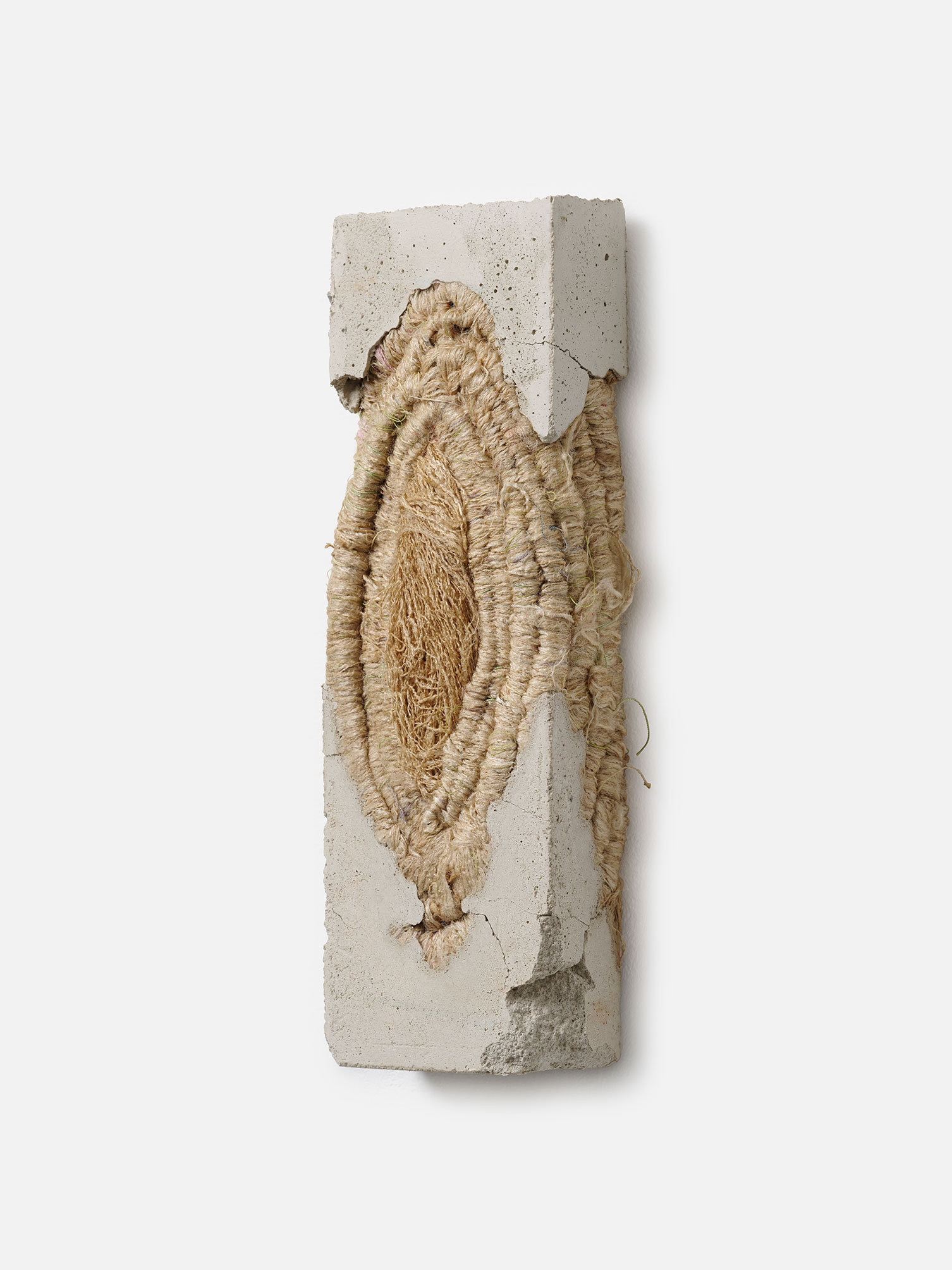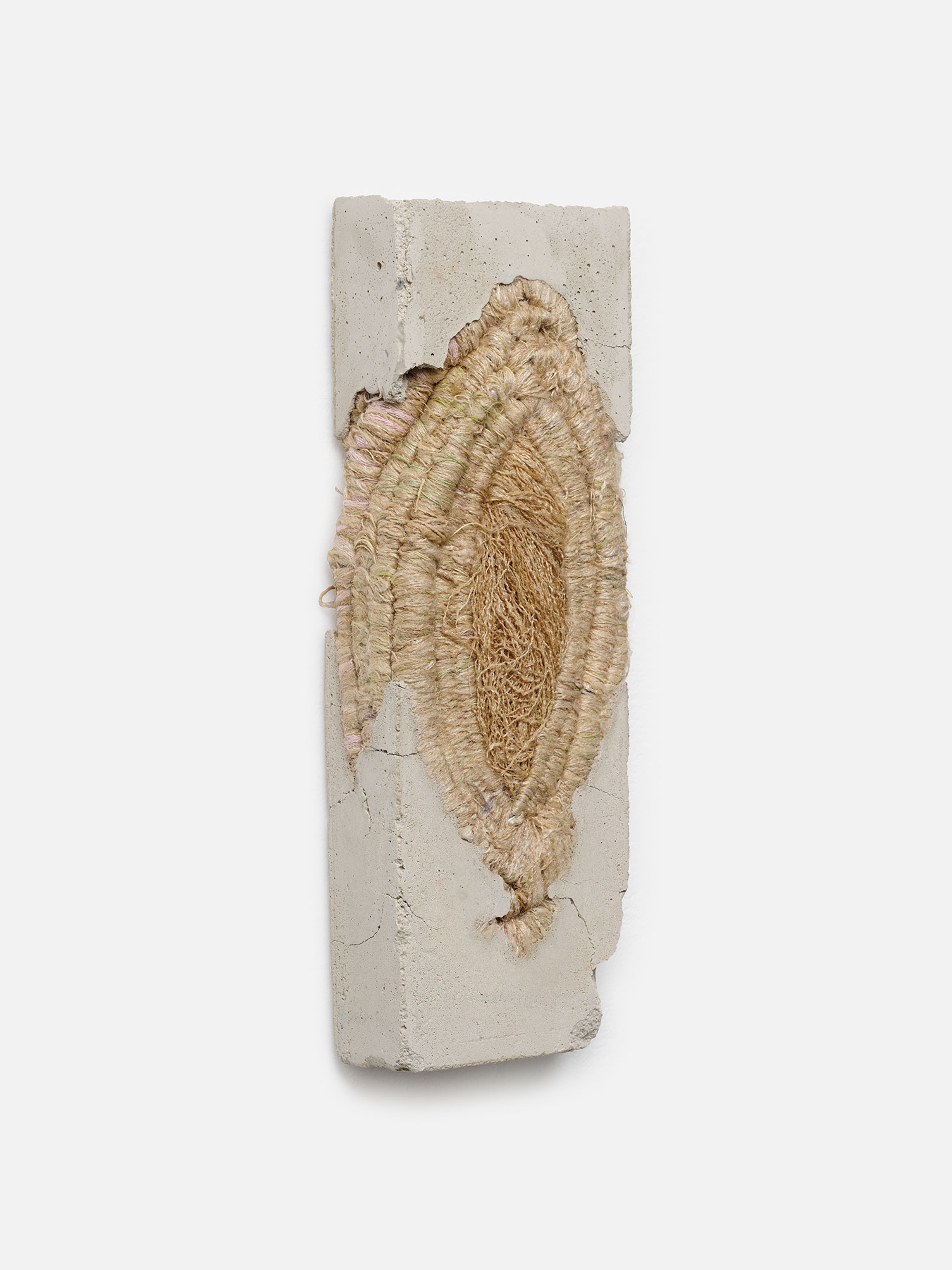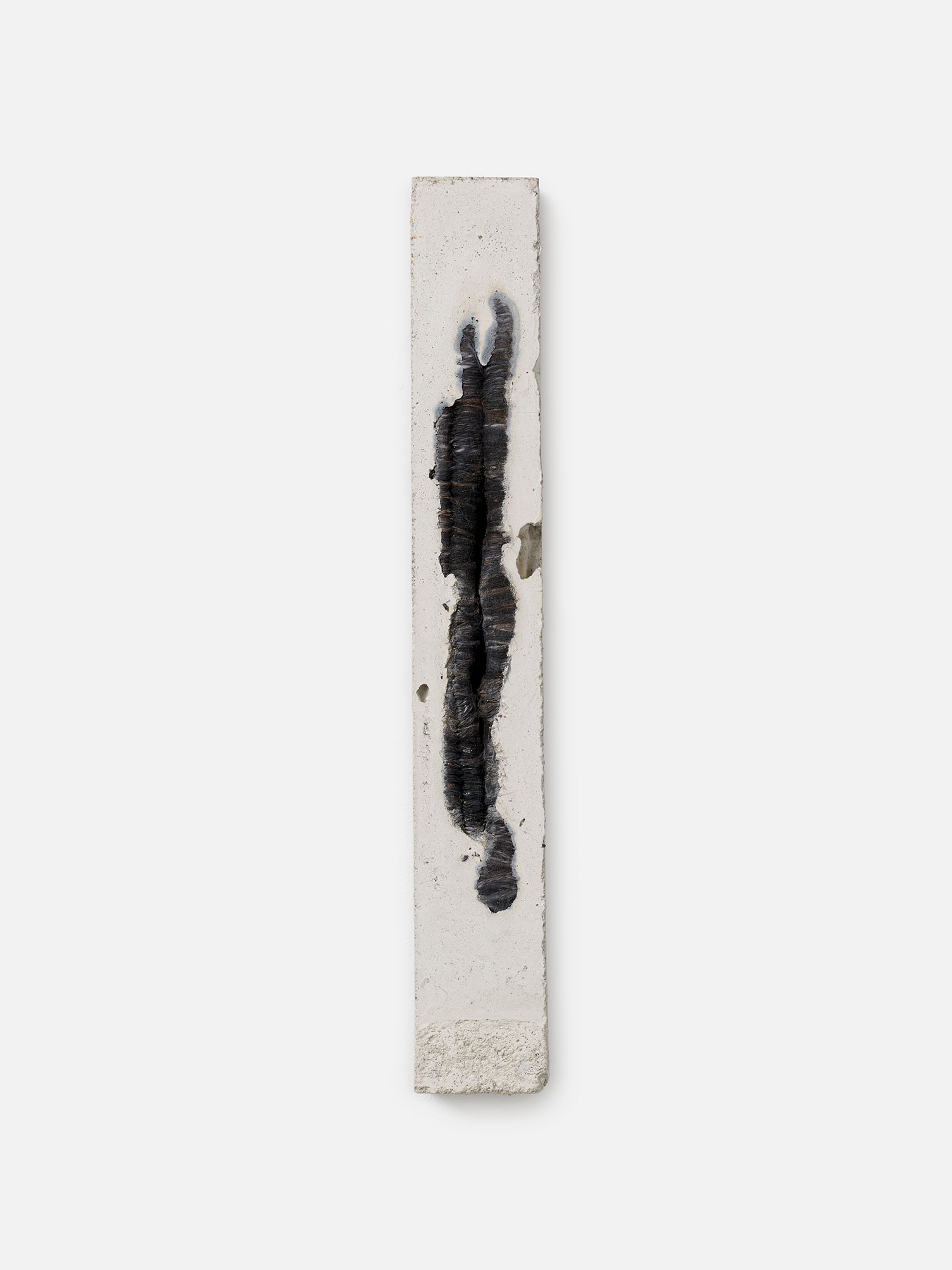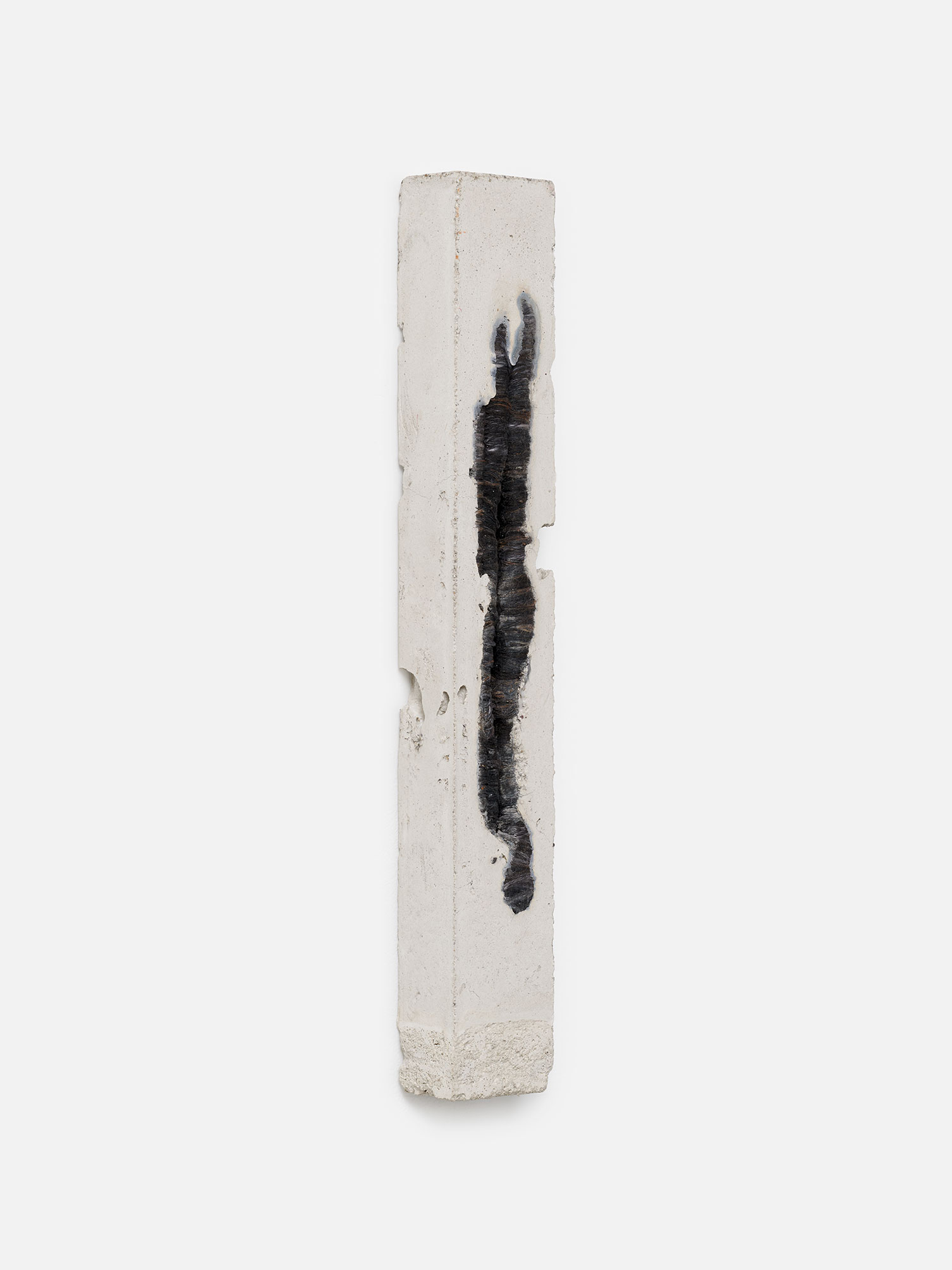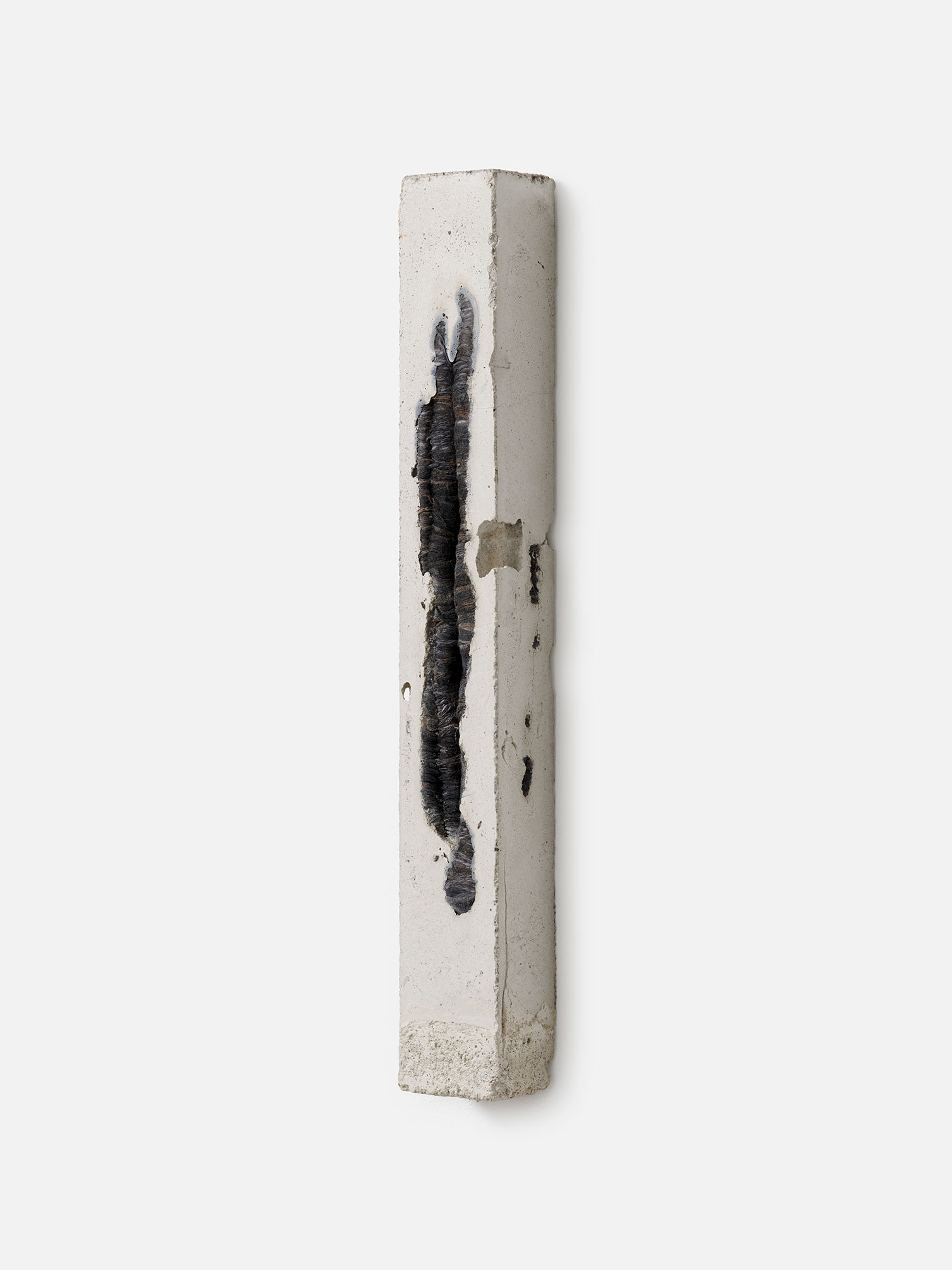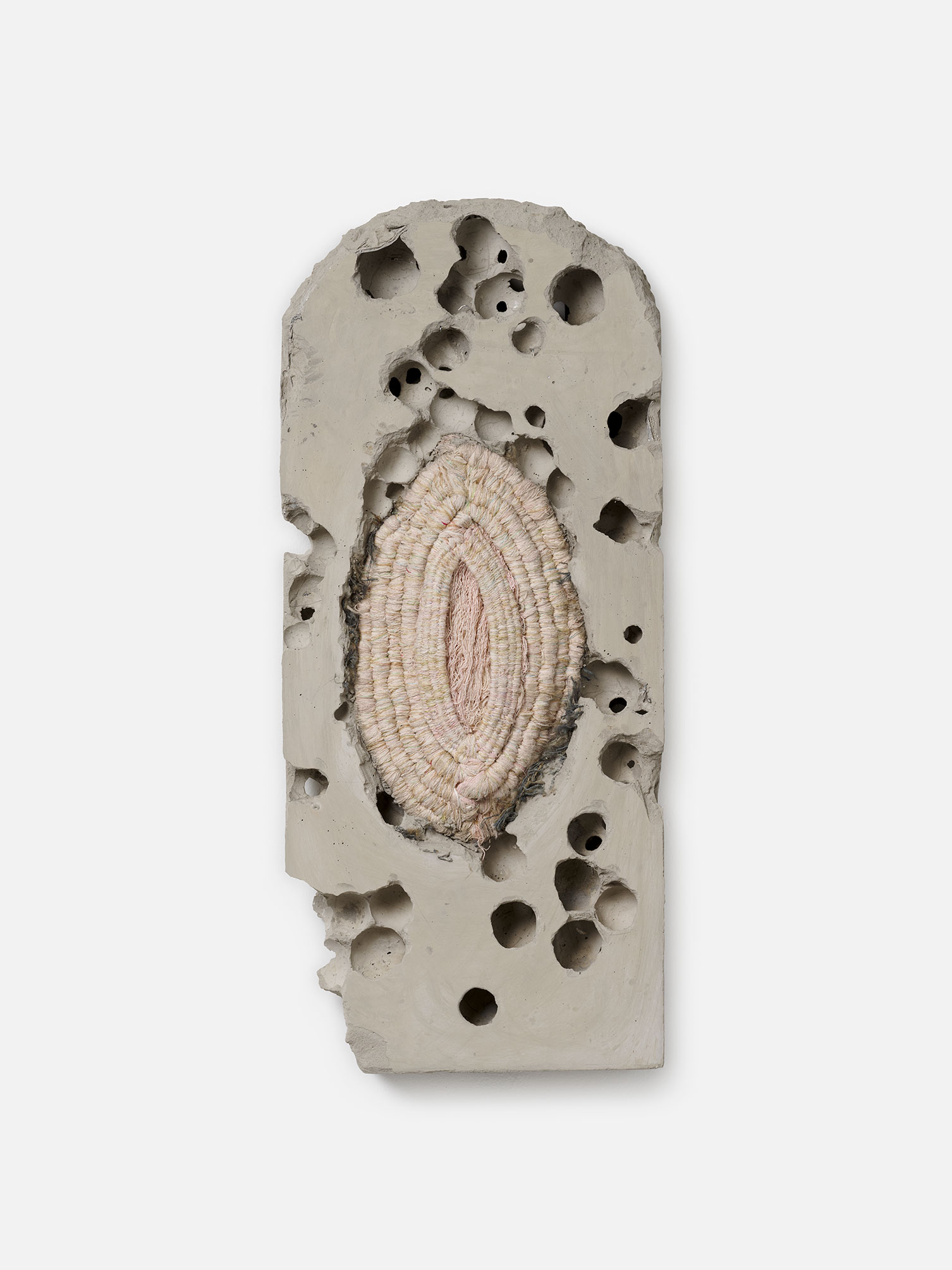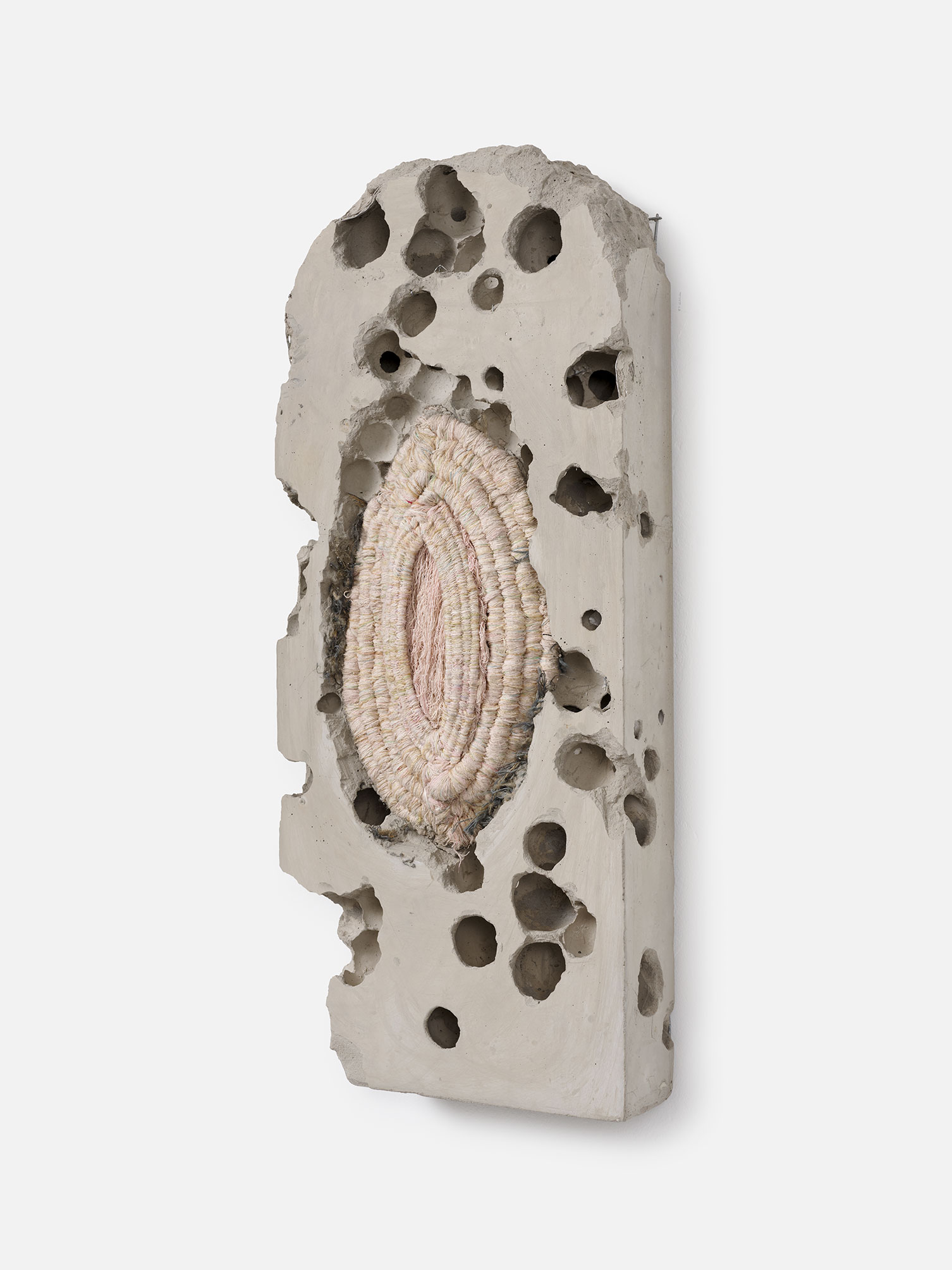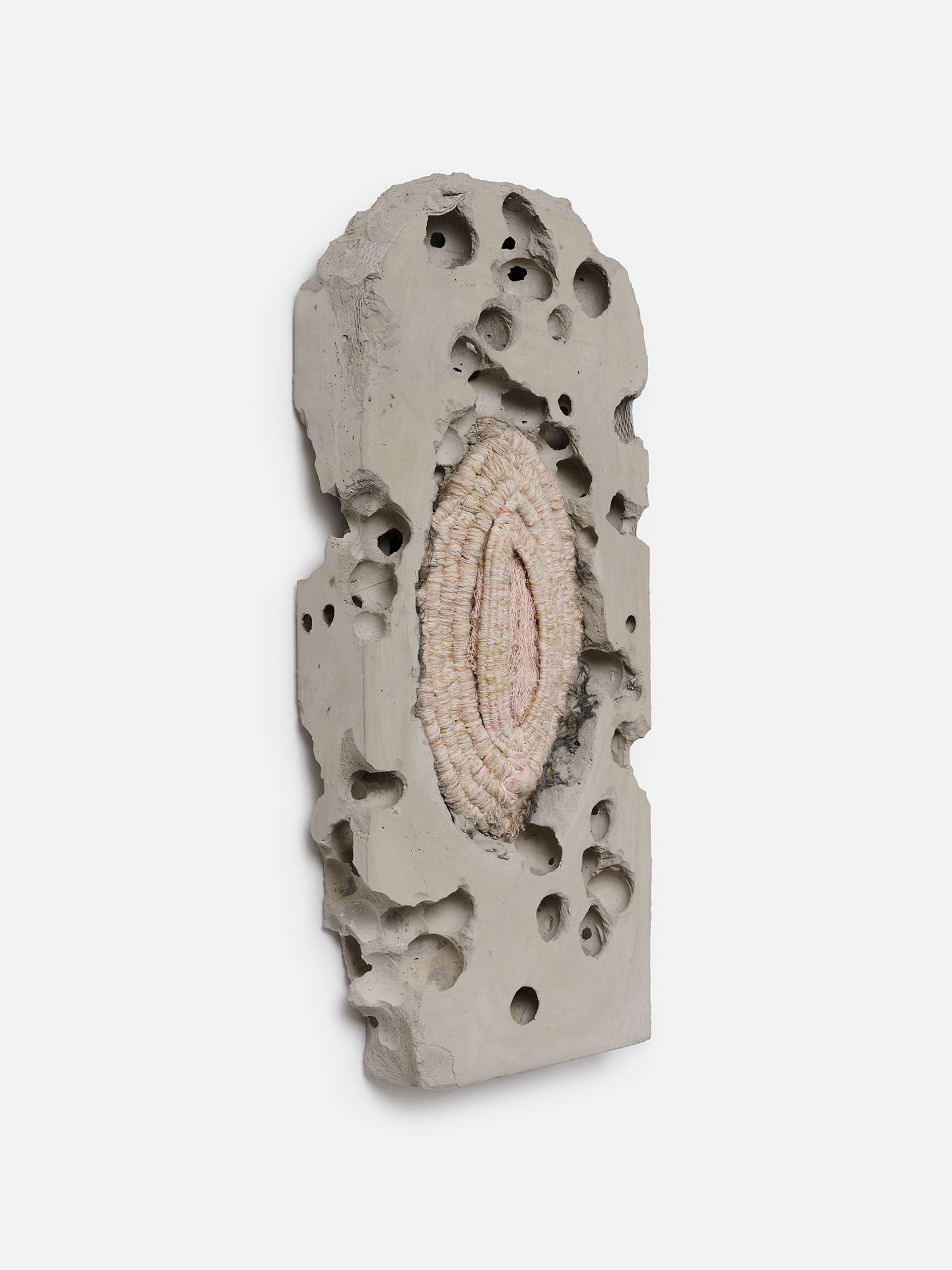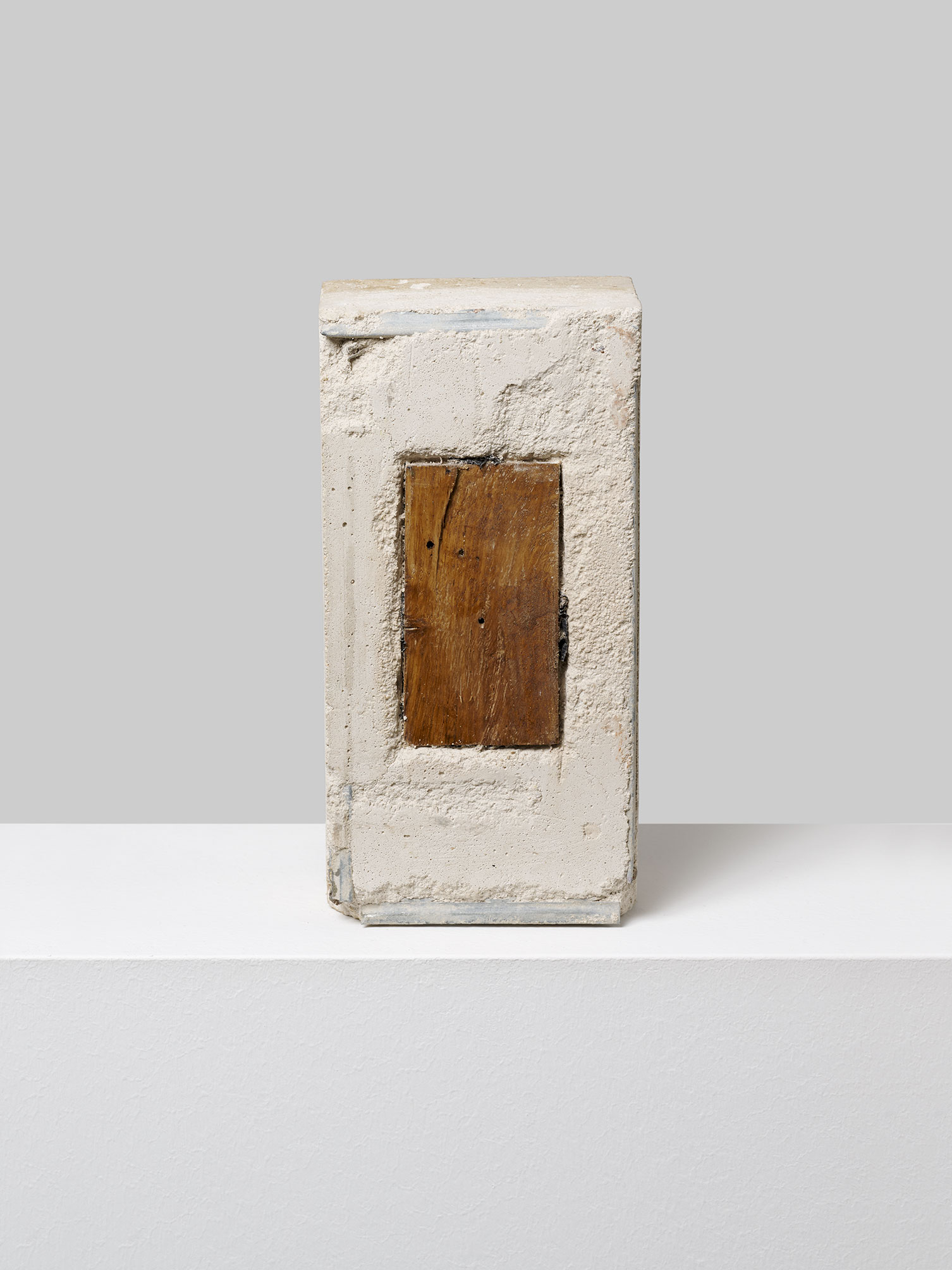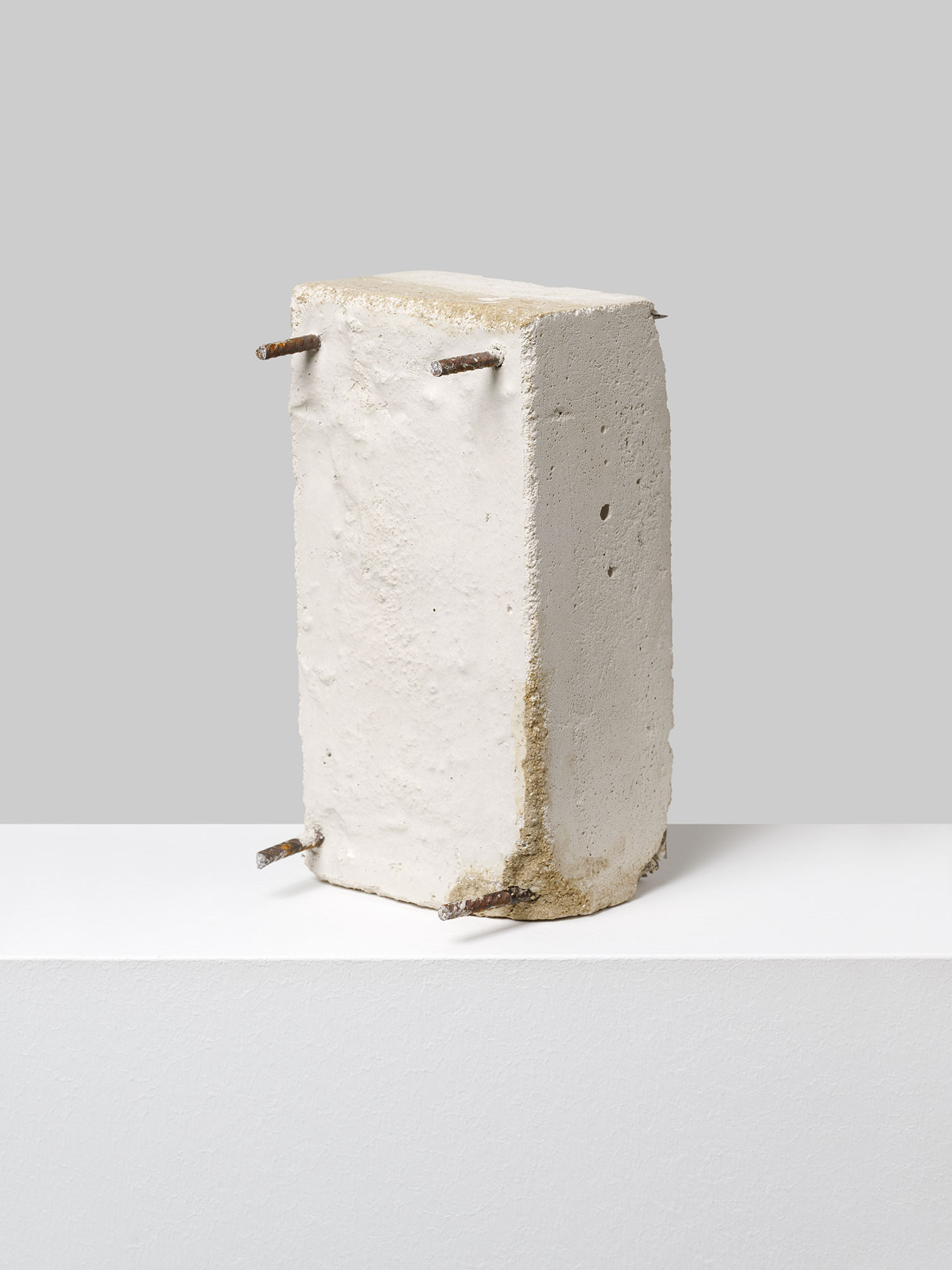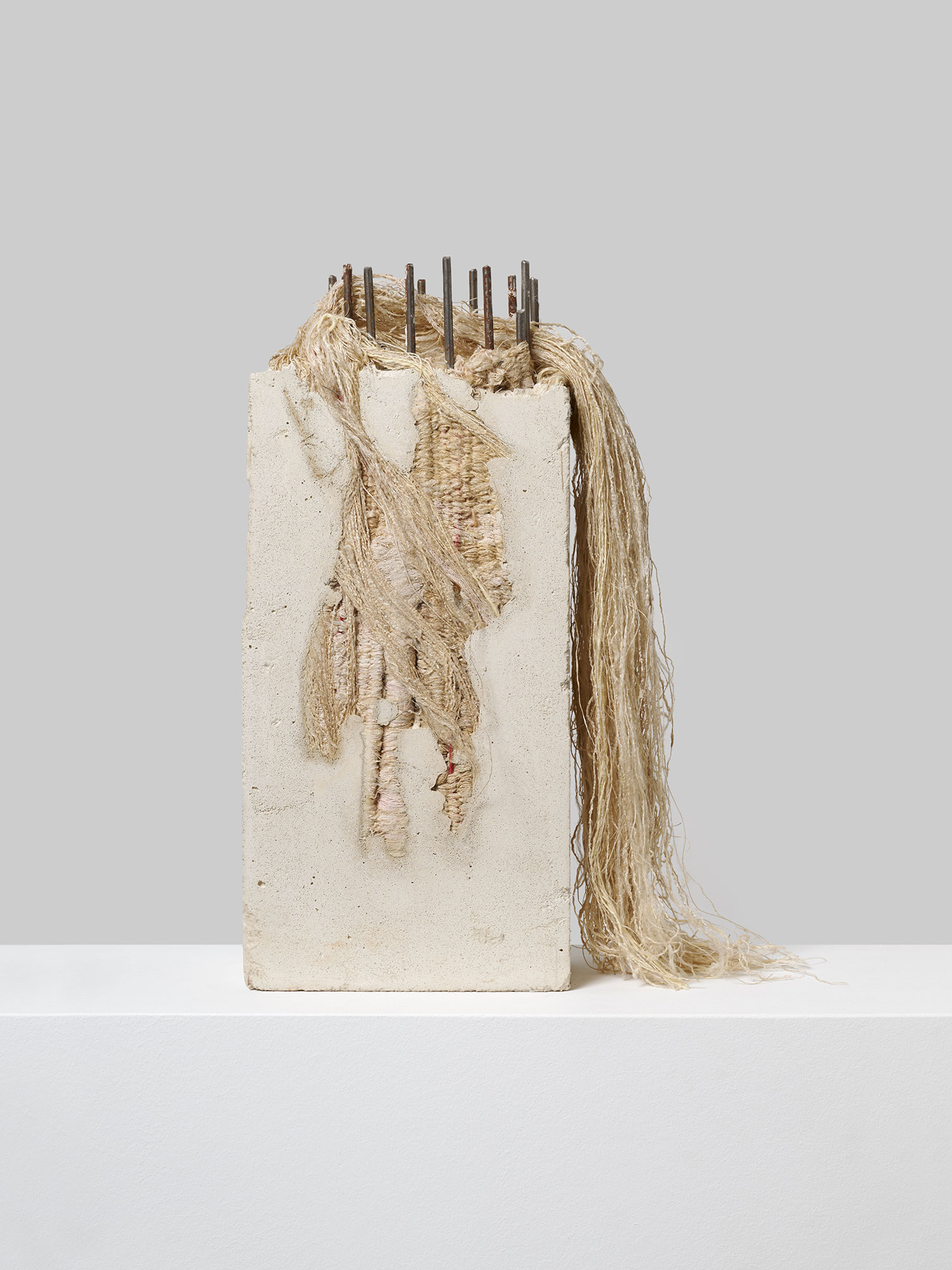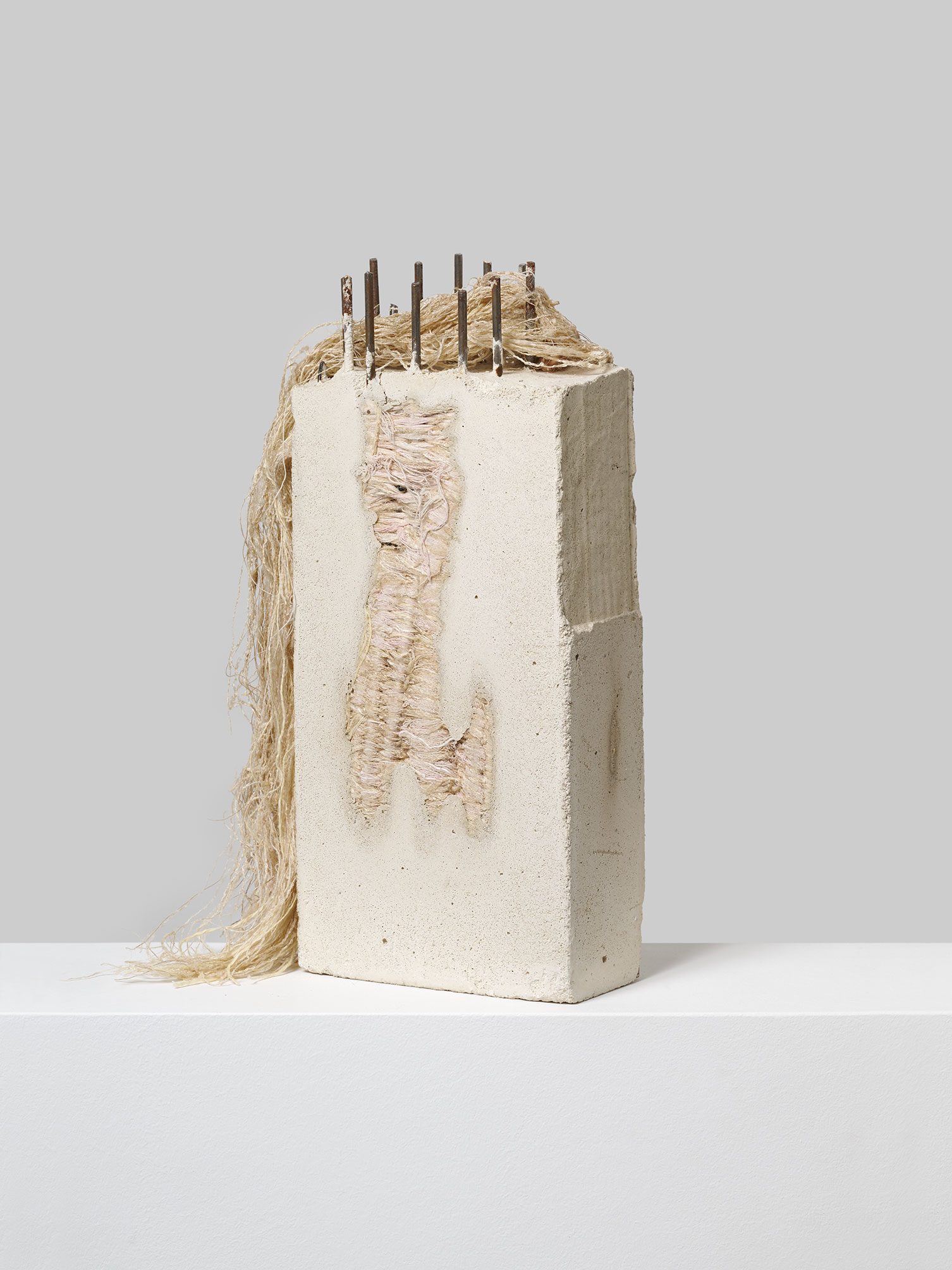–
Forgive yourself for everything
Installation Views
Works
Press Release
Throughout Soojin Kang’s artistic practice, weaving, entwining, and interlocking have been important and central methodologies. Grounded in a fascination with the atypical possibilities of textile, and sensing the deeper societal and autobiographical referents, formatively whilst working in the fashion industry, and subsequently as a bespoke furniture designer, Kang continues to employ a vernacular of handcraft techniques.
Kang’s method of inquiry, an attempt to truly imbue her materials with the potential for meaning, often necessitates an entirely artisanal approach to making. Avoiding the use of mass produced, or manufactured materials, Kang very often begins with natural dyes, and unprocessed raw twine. Her deep awareness of, and desire to understand her natural environment, establishes for Kang an ecology, one that seeks to balance the voice of the artist, her materials, the forms she produces, and their reception.
In many contexts the activity of handcraft is often linked to the cathartic passing of time, a means to unlock memory and perhaps record histories. Knitting is often engaged to pass the time of day, provide a shared activity on a birthday, or relax during a summer break. For Kang, the occasion, the situation, the concentration, and care with which she carries out her craft, is intrinsically linked with a sense of commemoration. For Kang each line, every detailed woven element, is tethered to her own memories and life: a document of a process and a momentum to a work being drawn into existence.
Galerie Khoshbakht is delighted to present a new body of work, begun in 2022, which for Kang represents a period of new material exploration. With confidence, and a deep understanding the role woven fabrics played within her practice, Kang begins incorporating complimentary and contrasting materials to develop her artistic language.
Here then, for the first time in the artist’s practice, we encounter concrete. Concrete is a composite of material elements, but considered a feedstock, primary commodity, or raw material. It is inherently a formless thing, and without intervention, a cast, it remains only as potential; for kang, like a spool of unwoven thread.
Whilst self-developing a studio space on a recently acquired farmstead in Kulmbach, Germany, Kang recites how she has, for a long period, been surrounded by the application of building materials, and how she became fascinated by how these materials were being utilised to form an environment within which Kang would eventually work. Kang reflects upon this experience, and here observes a central logic within her artwork, presenting an intersection of sculptural form, both tethered to the viewer’s spatial situation, but placed in relation to her woven storytelling.
Highlighting the tactility of both textiles and concrete, the artist continues to explore themes of memory, care and preservation, subjects that are central to her past practice, but also introduces a suggestion of context, and perhaps an artistic spatial situationism.
The use of concrete at first appears in simple contrast to earlier parameters of time-based methodology; it signals a moment in time, as opposed to passing of time, operates as a mark, as opposed to a process. On close inspection however, core properties are rendered visible and captured, one becomes aware that process is frozen in time, the bubbles the cracks and fissure that describe formation, whilst holding onto its woven counterpart.
Unruly and loving, the works of Soojin Kang present a moment of transience: a movement from form to care and back again.
